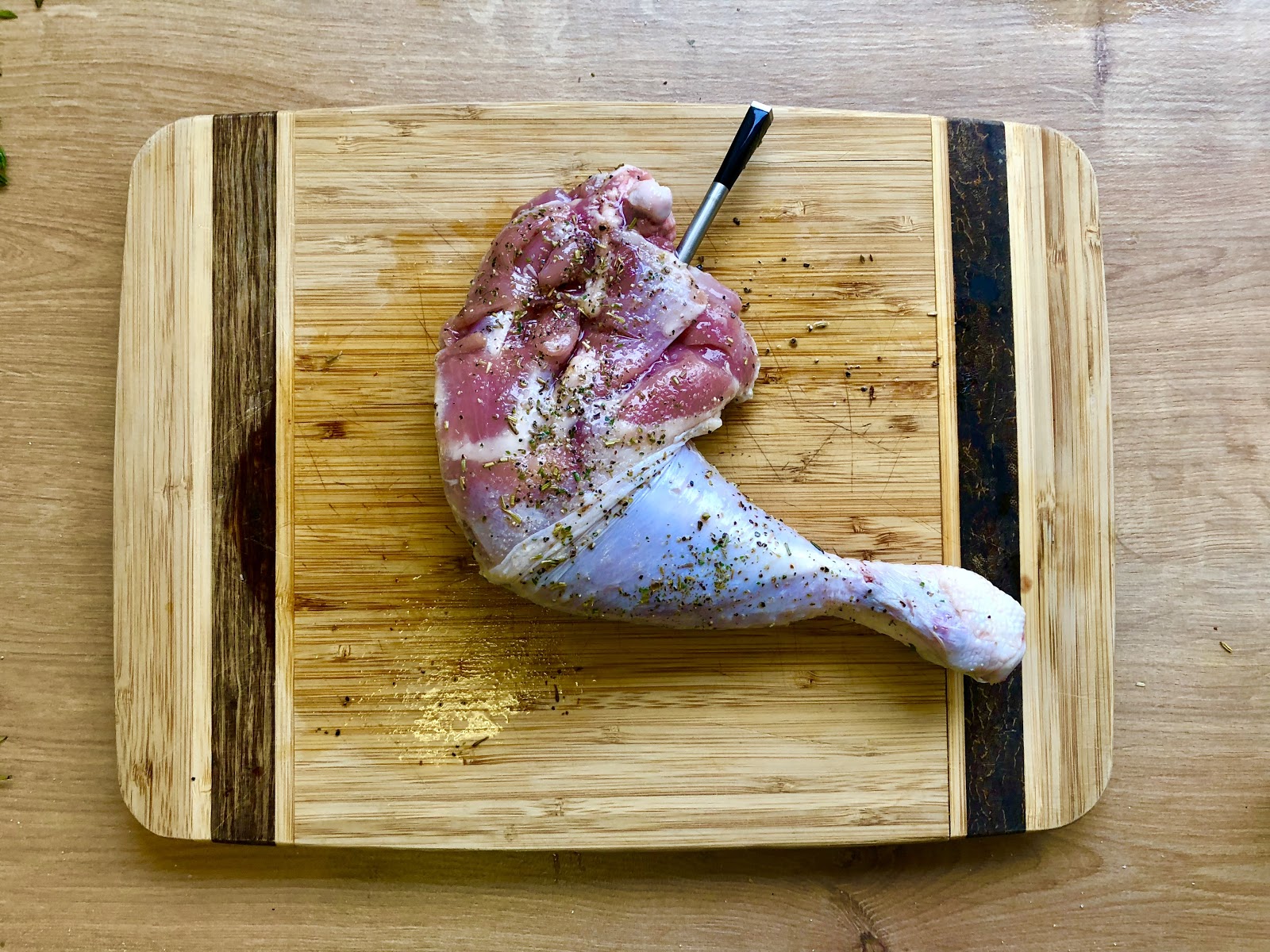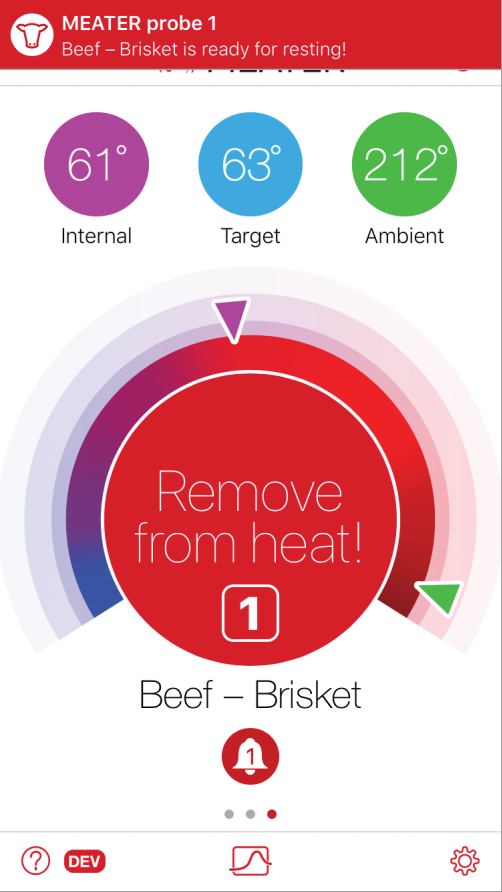Overcooking with MEATER can usually be boiled down to a few simple causes. These have been detailed below to help you improve your cooking experience with MEATER.

The most important step to ensure perfectly cooked meat is inserting your probe correctly. Always find the thickest part of the meat and insert the probe at that point. Make sure it does not go in at an angle and end up closer to the surface of the meat. It is equally important to avoid touching any bones with the MEATER probe as they will contribute to false readings for the internal temperature.
Once the probe is inserted the internal temperature sensor (roughly halfway between the tip and the insertion notch) should be located in the thickest part of the meat with the ambient end (black ceramic) completely free from contact with meat.

These limits are based off the reasonable temperatures expected when cooking meats. The internal components of the MEATER are not expected to reach high temperatures as they are shielded by the meat itself. This should not be an issue, however, because the internal temperature of your meat should never reach 212°F/100°C, or exceed it, as it would be inedible due to complete moisture loss.
The ambient sensor should only be used in temperatures up to 527°F/275°C because it is only intended for use in indirect heat. If you were to sear your meat in a pan with the MEATER inserted, for example, you would risk permanently damaging the ambient sensor. For situations such as this we always recommend finding a compromise, such as a reverse sear method where the MEATER is used for the cooking but not the searing.
A good way to avoid overcooking your meat is to cook at a much lower temperature for a longer time. Gently bringing your meat up to temperature reduces how much it will continue to cook when resting. This way, you won’t find that you overshoot your target temperature during the resting phase.
Sometimes it can be harder to control your cooking temperature, this could be due to flare ups on the grill, or a change in timing requiring a higher oven temperature mid cook. In these cases our estimator will try to re-calibrate the time required for your meat to hit target, however you are more likely to experience an overcook in these cases.
The MEATER app will warn you by default when there are 5 minutes left on your cook. After this you will be notified again when your cook is ready to be removed from heat. It is important that you respond to this by removing the meat from your oven / grill or smoker and placing it on a room temperature surface as soon as possible to avoid overcooking.

This will often occur when the internal temperature is still a few degrees below your target temperature. This is because when meat is resting, it continues to cook internally for a little while and the MEATER estimator factors this in.
It is important to let meat rest fully after cooking, as not only does the internal temperature continue to rise but the muscle fibers will be contracted from the cooking. During the resting phase, they gradually relax, making the meat more tender (and allowing for much easier removal of the MEATER probe). Our guided cooks always take this into account and will tell you to remove your meat at exactly the right time and also allow ample resting time.
When resting ensure to place your meat on a room temperature baking tray or wire rack and do not tent the or wrap the meat in foil. Our estimator calibrates a resting time based on room temperature resting. Any action that would increase this can lead to overcooking.
If you have followed all of the above steps and continue to overcook then please use the link below to utilise our MEATER support wizard.
Let's socialize: